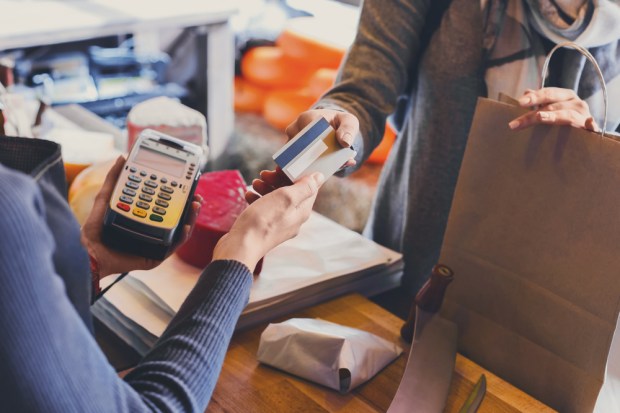Bread Finance On Why The Early Financing Offer Catches The Conversion Worm

Offering financing to consumers can be a tremendous marketing and customer retention tool for retailers that do it right. The trick, Bread Finance CTO and Co-founder Daniel Simon told PYMNTS in a recent conversation, is doing it right to ensure that consumers know about financing — and whether they can use it — long before they ever hit the checkout. It can be the difference between growing a basket and nailing a sale or accidentally driving a customer away to a competitor.
Traditional shopping experiences within a store are pretty linear as a rule. The customer goes in, looks around, finds their goods and lines up at the point of sale. Retail-sponsored financing models of old — i.e., store-branded cards — were developed to be part of that highly linear journey. The customer, usually during checkout, is given an offer for a card, fills out an application and is either approved or not right at the point of sale.
However, digital shopping journeys, as Simon told PYMNTS, are much less linear. Consumers might start the journey on one device, then move to another to transact. They may start in a brick-and-mortar store and see what they want, then switch over to the eCommerce channel to make the purchase. They also tend to “jump around” a lot during the online shopping process, finding a product on one site, then checking reviews and prices on others.
That digital journey, Simon noted, is a poor fit with the financing tools on offer today, which only bring in financing options at checkout — and often in a disruptive way that involves the customer wandering off-site to apply. Those types of “solutions” aren’t doing enough for the retailer in terms of building up basket size or inspiring conversions, Simon said, which is why he co-founded Bread Finance: to offer up something better.
“Bread was really about reimagining what a digital-first, online financing solution could look like, that could integrate financing seamlessly anywhere in the shopping journey and help customers in their choices when interacting with a retailer,” he said.
The Early Offer Gets The Conversion
Bread is a white-label installment financing solution for retailers. On the front end, consumers interact with an easy-to-understand branded financing offer from their retailer of choice. On the back end, the Bread product, by way of its bank partner, evaluates borrower credit and extends the loan, then manages it from then on.
However, for retailers putting forward financing for consumers, Simon noted, it’s about more than just having it and offering it up. It’s about timing that offer so it is relevant to the consumer.
“Even if you are just paying with a credit card, it takes an average of 23 clicks to check out online. That can be a pretty long journey when you think about optimizing a conversion funnel,” he remarked, “and adding financing often just makes that seem even longer. As [during the application process], so many financing companies take the consumer away from the retailer’s page and onto a whole new website.”
Traditional financing applications are long and confusing, he noted, and not well-designed from the consumer’s point of view. Many consumers will abandon their carts when they encounter friction or are redirected off the page, which means offering financing not only fails to net a sale for the retailer, but, in some cases, might even cost them one.
Moreover, Simon said, the end of the transaction is the wrong time to start talking about financing anyway. The customer has already chosen what they are purchasing. Bread Finance allows customers to pre-qualify for financing at any point while browsing (whether on the homepage, category page or product detail page), all within the retailer’s site.
“After [they give us] a few pieces of information, we can tell them a decision within seconds and how much they can spend, what rate they are getting and exactly what the repayment terms will be,” he noted.
That kind of foreknowledge is a powerful tool for a customer. Furthermore, it gives the customer a reason to buy from the retailer with which they have already engaged in the shopping journey. They now have additional alternatives in how to pay for their items.
“It can mean converting customers who are on their site by allowing customers to pre-qualify for financing on product detail pages, landing pages and shopping cart pages,” Simon said. Without the financing offer, he noted, many of those customers would have simply dropped off earlier in the funnel.
The Most Wonderful Time Of The Year
With Halloween now officially past, Simon noted that retailers’ busiest time of year is coming up, which means Bread Finance’s busiest season is coming up as well. Bread’s job now, he said, is to work with its retail partners to use financing as a marketing tool.
The focus is on building out its seasonal marketing campaigns with an eye toward prominently featuring financing options, Simon said. That might include building specialty financing offers that are specifically time-linked to the season so as to motivate customers.
It’s a very busy time, Simon noted — and if the past is a prelude, it is about to get even busier.
“What we have seen in the past is this enormous amplification in sales, and in the effectiveness of those marketing campaigns, during the season when financing has been a big part of the story,” he said. “It was a great time of year for us last year, and we expect the same this year” — a year very likely to build basket size, since the consumer now has a full picture of their total buying power on the site.